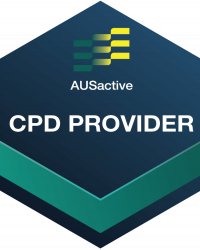Reformer Repertoire
Long Stretch Series:
Elephant
Alternate Names
Hamstring Stretch
Derived From
Classical Reformer: Elephant
Primary Element
Mobility
Why for Primary?
To create mobility at the hip joints and to stretch the back of the legs, in particular the hamstrings, as the carriage moves back and away from the stopper.
Secondary Element
Strength
Why for Secondary?
To create and develop strength in the transversus abdominis muscles to control the movement back in towards the stopper.
Tertiary Element
Stability
Why Tertiary?
To create torso stability by engaging and strengthening the transversus abdominis or low abdominal muscles.
Repetitions
8-10
Apparatus Setup
Suggested springs
- Number system: 1 springs
- Colour system: 1 x red spring
- Resistance: light
Foot bar one position is set at one position down from vertical, or on many Reformers the top angled position. If the Reformer has a vertical setting it can help to take that top vertical position in order to keep the body weight back as opposed to leaning forward and down to the bar with the body weight too far forward. This can help if the client has particularly tight hamstrings and it will help them keep their body weight back.
Plane of Motion
Sagittal
Targeted Muscles
The shoulder flexors as the arms are pressing into the foot bar and reaching upwards
Shoulder flexors
- Anterior and Middle Deltoids
- Pectoralis Major
- Biceps Brachii
The abdominal muscles to keep the torso in the same position throughout, and the transversus abdominis to assist in moving the carriage forwards and tucking the pelvis posterior.
The hamstrings or muscles at the back of the thigh when stretching and pressing the carriage backwards
- Biceps femoris
- Semitendinosus.
- Semimembranosus
Warnings
This exercise may be unsuitable for clients where abdominal engagement is contraindicated or creates pain, or where a client is unable to stand with their head downwards.
Execution
Stand upright on the Reformer carriage facing the foot bar with the feet against the shoulder blocks and the weight into the heels. Place the heels of the hands onto the foot bar shoulder width apart with the fingers relaxed.
Inhale to push the legs back extending the carriage maintaining the same position of the arms and torso. Exhale to return to the starting position engaging the transverse abdominals to initiate the movement.
Observations
Do a body scan of the client taking note of the following points
- Head and Neck
- Is the back of the neck long and crease free? A slight retraction of the neck with the chin tucked can help avoid straining the neck forward and up as the arms reach forward and upwards
- Pelvis
- Are the hip bones even horizontally or is the client leaning to one side?
- Is the client about to keep a posterior tilt throughout with engagement of the abdominals? Look for the rib cage popping forward and down, ideally it is kept up and in.
- Is the movement happening from the pelvis backwards and can the client keep the torso and arms still?
- Arms
- Are the arms shoulder width apart with the heels of the palms resting on the foot bar without any white knuckle grip of the fingers?
- Are the same straight throughout? A soft bend in the elbow is ideal but generally straight arms
- Legs
- Are the legs straight throughout? A soft bend in the knees is ideal but generally straight legs
Learning Style Technique Cues
Auditory – word associations that connect mind and body
- Aim to keep the pelvis and torso still when you extend the legs away
- Bias the pelvis towards a slight posterior tilt in order that you can avoid extending or arching the lumbar spine
- Say the client’s name when you’re about to interact with them
Visual
- Imagine swinging back from the pelvis and in again like an elephant’s trunk
- You may demonstrate a part of the movement as a visual representation for the client to see
Kinaesthetic
- Maintain stability in the shoulders and torso, engaging the low abdominals to draw the carriage in
- Feel the hinge at the pelvis and engage the abdominal muscles to maintain stability of the torso.
Modifications and Variations
Regress the exercise by
- Reducing the spring setting to one blue spring so there is less resistance to pressing away
- Reducing the repetitions and/or pace
- Bending the knees if the hamstrings feel tight, or stepping forward towards the front edge of the carriage
- Working on Long Stretch Series: Up Stretch
Progress the exercise by
- Increasing the repetitions and/or pace
- Increasing the spring set to one blue spring and one red spring (watching for too much load into the wrists as the resistance of the springs increases)k
- Working on a single-leg variation with one leg extended back out behind the body and lifted up towards hip height
Client sore from loading into the wrists?
- Activating or connecting into the shoulders can help
- Try externally rotating the shoulders so the palms face inwards and placing the hands on the outside rounded edges of the foot bar
- Limit the repetitions or stay from 8 to 10 repetitions onl
Series and Transitions
This exercise is part of the Long Stretch series which includes a range of other exercises in the progressive repertoire. The Long Stretch series can also be found in the Mat Work in the variations of Plank or Long Stretch and Pike or Up Stretch.
Transition to Long Stretch Series: Long Stretch by returning to the start position, then transferring the body weight forward and lowering the pelvis in line with the shoulders and ankles into a plank position.
The traditional order of the Long Stretch series is
Inspired Academy follows the order to create stability and mobility before building strength.
Progressive repertoire

